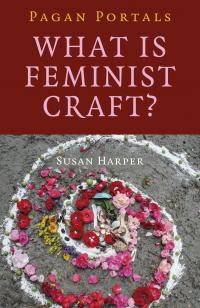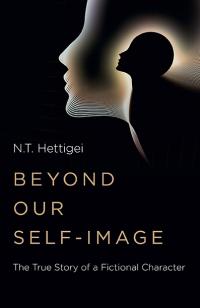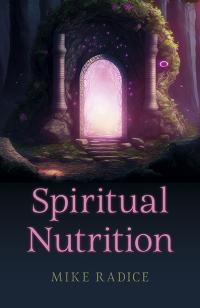
When it was first published in 1974, Raymond Buckland’s The Tree: The Complete Book of Saxon Witchcraft introduced a new tradition and influenced the future of Wicca throughout the world.
Buckland was a young Englishman already in his twenties when Gerald Gardner published Witchcraft Today and, later, The Meaning of Witchcraft. Despite this, Buckland did not learn of Wicca until after he moved to America with his first wife, Rosemary, in 1962. Drawn to the Wiccan religion, the Bucklands traveled to Perth, Scotland, a year later, where they were initiated by Gardner’s high priestess, Monique Wilson. Gardner and Buckland had become friends by that time and Buckland soon became Gardner’s spokesperson in America.
While there were other forms of witchcraft practiced in the 1960s, it was Wicca that most often caught the public’s attention. At that time Wicca was a purely initiatory path notable for its nature-worship, elements of ceremonial magic and its ritual nudity. The religion had a strict hierarchical structure.
Because of the initiation process, Wicca could only grow slowly and, as such, was inaccessible to many people. Even after receiving an initiation, a Wiccan could have his or her credibility revoked by someone higher up the initiatory line. By the early 1970s, Buckland felt a need for something with less of a despotic power structure.
There was nothing unique about creating a new tradition even then. In 1957, Doreen Valiente had broken away from Gerald Gardner’s coven to form her own, eschewing Gardner’s “old laws of the Craft”. Alex Sanders was another Englishman initiated roughly the same time as Buckland; by the mid-1960s he had modified the Gardnerian rituals to create his own Alexandrian tradition. The difference was that these others retained the essential hierarchy and organization of Gardner’s tradition, whereas Buckland was creating something novel with his Seax Wica tradition.
“I created it simply for the use of myself and a few friends,” says Buckland. “It was only when word got out (as it always does in Pagan circles!) as to what I was doing that I found there was a much greater interest.”
Seax Wica went public in the Yule 1973 issue of a national Pagan periodical called Earth Religion News, only months before its rituals and philosophy were published by Weiser Books as The Tree: The Complete Book of Saxon Witchcraft.
The lineage of Seax Wica can be seen in its name. While almost all Wiccans today still pronounce the word as WICK-eh (rather than using the Old English pronunciation WITCH-eh), the overwhelming majority now use the Old English “cc” spelling (Wicca). Gardner only occasionally used the word Wica in his writing, and then always with a single “c” spelling, possibly because, as Buckland says, “he was notoriously dyslexic and not the most accurate researcher”. So why was the Seax tradition dubbed Seax Wica with the single “c” spelling? Buckland tells me, “Since that was the form (Gardner) adopted and kept throughout his books, I followed suit, as an early devotee of Gardner.” This spelling continues to be popular among many followers of the tradition, not because of ignorance, but from pride in their history.
Buckland has received some unwarranted criticism from people who do not understand what Seax Wica is. In The Tree (titled in a later edition as Buckland’s Book of Saxon Witchcraft), Buckland does not claim to present the pre-Christian Saxon religion. Seax Wica is another expression of Wicca, pure and simple. “The Seax Wica was to be a new form, quite separate from my earlier association with the Gardnerian tradition,” he says, “and I was not trying to reconstruct an original religion so I took the Saxon culture only as a bare skeleton on which to hang the rites and practices I devised.” Thus the Lord and Lady of Seax Wica are the Saxon deities Woden and Freya (Fréo), initiated witches are known by the Saxon word gesith (meaning “companion”), and one of the officers of a Seax coven holds the Saxon title of Thegn. Even the name of the tradition itself, Seax, is a Saxon word for a large knife. (The knife, or athamé, is a primary working tool in Wicca.) Beyond this, Seax Wica bears very little resemblance to the religion of the pre-Christian Saxons. Some of the differences were intentional. For example, Buckland chose to pair Woden with Freya because he believed the name of Woden’s actual consort, Frig, had a vulgar meaning in Modern English. (The word “frig”, meaning to copulate or masturbate, was in more common usage in the 1970s than it is today.) Celtic names were used for some of the holidays, such as Lughnasadh rather than the Anglo-Saxon Hlafmæsse, simply because they were more familiar to the Wiccan community. Instead of her (historical) golden necklace, Freya has a “silver circlet” in the Seax tradition.
But the significant changes found in Seax Wica were unrelated to its cultural imagery; the important changes were in the very structure of the tradition.
A New Wicca
Until 1974, a person claiming to follow Wicca with no Gardnerian initiatory validation would often be regarded by other Wiccans with disdain. There were some exceptions, such as Zsuzsanna Budapest,
who founded the Dianic Wicca tradition. But formal initiation rapidly became less important after the publication of The Tree. Buckland continued to advocate initiation. However, his new
Seax Wica tradition offered a Rite of Self Dedication for those who could not find a coven. Now anyone could enter the Wiccan religion, and the person who had opened that door was none other than a
man who had been initiated by Gerald Gardner’s high priestess.
Behind closed doors many people were creating their own variants of Wicca, and they had the resources to do so. Lady Sheba had published her version of the coveted Book of Shadows, a book of prayers and rituals. Authors such as Paul Huson, Louise Huebner and Sybil Leek inspired their readers to explore non-Gardnerian expressions of Pagan spirituality and magic. Most of the new traditions bolstered themselves with faux initiatory lineages that inevitably led back to a dead grandmother, a long-lost acquaintance or some other person conveniently unavailable for questioning.
The Seax tradition cast aside the need for initiatory validation, and offered options previously unknown in Wicca. The Gardnerian-style power hierarchy was completely dismantled in Seax Wica. A Seax coven has a priest and priestess to facilitate the group’s rituals, but these positions are elected annually rather than giving anyone a permanent, irrevocable seat of power. Whereas in the Gardnerian tradition the priestess must be present to conduct a coven meeting, in the Seax tradition either the priest or the priestess, or both, can convene a meeting. Whether initiated or self-dedicated, all gesiths enjoy the same status, and there is no degree system for higher levels of initiation.
These changes were specific to Seax Wica, but they had a ripple effect throughout the Wiccan religion. Of course there were still “old school” priestesses and priests who ruled their covens with iron fists, but these began to diminish in number. Wiccan leaders who abused their followers were more likely to see those followers leave for greener pastures. The religion of Wicca changed irrevocably, and today there are countless Wiccans who proudly admit that they have never been initiated and feel no compulsion to seek out any validation beyond what they have received from their Gods.
Seax Wica was also the first tradition to openly welcome gay men, even though Buckland himself did not think it likely that gays and lesbians would be attracted to Wicca due to its male-female dualism. In this he was mistaken.
A Worldwide Tradition
As it turned out, gay men were attracted to Wicca. Regardless of their sexual orientation, gay men had come into existence through the male-female unions of mothers and fathers. Like
everybody else, they were sustained by food produced through male-female fertility. Gays were as much a part of the cycle of life celebrated by Wicca as their heterosexual brethren. (Lesbians, of
course, were equally welcome in Seax Wica, but they also had another potential home in Budapest’s Dianic tradition.)
People, straight or gay, who could not find other Wiccans were attracted by the Seax tradition’s Rite of Self Dedication as well as the more open attitude towards solitary worship. Others were attracted to the egalitarian structure of Seax covens, and still others simply liked the Saxon trappings. For many reasons, people were drawn to a tradition that now has followers throughout the world.
As might be expected, Seax Wica tends to be more popular in countries with an Anglo-Saxon heritage such as the United Kingdom and the United States, but the tradition has a surprisingly extensive following in Peru. One coven in Peru, Meomer’s Well, has members in the cities of Lima, Arequipa and Tacna. Juan Espinoza is a founder of the coven, which was established in 2001. He discovered Seax Wica in 1999 and discovered that “the form of the organization, the autonomy of the coven and fraternity with other Seax gesiths – coveners and solitaries – of other countries was amazing.”
Like so many others who have been drawn to Seax Wica, Espinoza and the other coveners of Meomer’s Well appreciate the freedom they have found in this tradition. Many groups adapt the official Seax rituals to their own needs, which is an acceptable practice in Seax Wica. For Meomer’s Well, one change was to revere Woden’s consort Frig. Since the coveners speak Spanish as their first language, the subtleties of English vulgarity are less relevant. They have added and adapted some other rituals and, like most Wiccans living south of the equator, have reversed the sabbats to correspond correctly to their seasonal changes.
In coming years Seax Wica may become more prevalent in other South American countries. Espinoza says that his coven “helps other groups of self-dedicated (gesiths) in Argentina, Bolivia and Chile.” He also tells me that “people from the Philippines have asked us to guide them in the Seax Wica tradition.”
A Personal Tradition
Since there is no practical means of enforcing conformity, Wiccans in many traditions other than Seax Wica have often been known to change the rituals and practices passed on to them. Buckland openly
encourages this in the Seax tradition. “Humankind is forever changing; adapting and adopting,” he says. “Religion is a very personal thing and should be comfortable for the practitioner. It would
therefore be contradictory to produce a tradition that was set in stone and locked into hard and fast rules and guidelines.”
Buckland worked hard to keep egotism and any ability for power building out of Seax Wica. The tradition does have three designations describing a person’s involvement, but these are not ranks as such. Those initiated or self-dedicated into Seax Wica are known as gesiths. Those who intend to be initiated or self dedicated but are in the process of learning more about the tradition are referred to as ceorls. Finally, a person who is not involved in Seax Wica (basically everybody else) is a theow. Because these are descriptive rather than ranks, it is entirely possible for a theow to take an interest in Seax Wica, thus becoming a ceorl, and then dedicate himself or herself to become a gesith all in the space of a few hours. (This would usually only happen, of course, if the theow was already familiar with Wicca.)
A Seax coven may and probably will require more before initiating a ceorl into the coven. Here again we see the freedom inherent in Seax Wica. Covens are intensely autonomous, answering to nobody. Each is free to expand its own rituals and practices. There is no national or international leadership; no Witch Kings or Witch Queens. Buckland himself is often called the Fæder of Seax Wica, but this is simply a respectful acknowledgment of his founding the tradition.
For a time Seax Wica had a Steward who people could go to with any questions about the tradition. In Buckland’s own words:
There were always questions to be answered. So when I could no longer find the necessary time I asked someone I knew – and had trained in the tradition – to take on that task. That was Michael Crow. He did an excellent job but eventually he, too, found himself in a similar position where he just didn’t have time to devote to it. I therefore asked another person to take it on. Regrettably he had grossly misrepresented himself (or I had badly misjudged him) and did a lot of damage. I decided that the Seax Wica must sink or swim on its own merits. Hopefully I had given sufficient information to create a good foundation, and others could build from there. So there is no longer a Steward of the Seax Wica.
Even within Seax covens there is little “power” other than what priests and priestesses command through respect for their own deeds. The priest and priestess are both chosen by their fellow gesiths (coveners) to facilitate the group’s rituals for at least one year. At the end of the year they may be asked to continue for another year, or the coven may vote for a new priest or priestess. A Seax priest or priestess who has led a coven for two or more years, whether or not the years were consecutive, is known as a high priest or high priestess, but even this person has no permanent position of authority in the coven.
The freedom inherent in Seax Wica extends to the tradition’s theology as well as its rituals and coven structure. As with most Wiccan traditions, and certainly all that descended from Gerald Gardner’s construct, there is a focus on duality in worship – a reverence for a Lord and Lady – but how this Divine Pair is perceived can vary from one gesith to another, from one Seax coven to the next. Some believe the Wiccan Lord and Lady to be the entirety of divinity, with the Lord being a manifestation of all male deities and the Lady a manifestation of all female deities. This idea was summed up by Mary Violet Firth (a.k.a. Dion Fortune) in her novel The Sea Priestess, when she wrote, “All gods are one god, and all goddesses are one goddess.”
On the other hand, Seax Wica accepts as equally valid the view that the Lord and Lady are but two among many deities. Historically the Saxons certainly acknowledged an array of gods and goddesses. Even the question of which Saxon deities should be revered is a personal choice for the Seax gesith. The god Woden usually takes the role of the Lord and Freya is very often the Lady, but in his introduction to Buckland’s Book of Saxon Witchcraft, the Fæder of Seax Wica has said himself that any deities can be revered so long as they are Saxon deities.
Woden and Freya
Regardless of this freedom, the majority who follow Seax Wica do call upon Woden and Freya in their rituals. Woden is the chief of the Anglo-Saxon pantheon, a god of wisdom and magic. Freya is the
Norse name of the goddess of passion and prosperity. In Old English her name would be rendered as Fréo, but in the Seax tradition her Norse name is almost always used.
From the very beginning Buckland was always open about why he chose to name Freya as the Lady of Seax Wica rather than Woden’s consort Frig (or Frige). In Modern English slang, the word “frig” is a vulgar term. But could the gods themselves have inspired Buckland on some unconscious level to substitute Freya for Frig? If we look only at the relationships between various Anglo-Saxon deities the pairing of Woden and Freya may seem awkward, but if we look at the functions of these deities the arrangement makes perfect sense. Magic has an inherent role in the practice of Seax Wica, as it does in most Wiccan traditions, and Woden and Freya are the two Anglo-Saxon deities most closely associated with the arcane arts. Woden is the wizard-god who gave mankind the mysteries of the runes. In addition to rune magic, Woden is called upon in an old Anglo-Saxon incantation known as the Nine Herbs Charm to promote healing with mystical powers. The goddess Freya (or Fréo) is the mistress of the magic of ecstatic trance. In the Ynglinga saga Freya teaches her magical arts to Odin (the Norse name for Woden). It makes sense that anyone following an Anglo-Saxon path would naturally call on these deities – Woden and Freya – for aid and counsel in magic.
Seax Wica Today
With covens and practitioners all over the globe, it is unlikely that the Seax tradition will fade away. With its rituals reprinted more than thirty years after The Tree was first published,
the tradition continues to attract new followers, which it readily accommodates without the constraints of cumbersome initiation requirements. Anyone with access to the rituals can perform a
self-dedication and begin worshipping the old gods.
Seax Wica has been a springboard inspiring many people to explore Anglo-Saxon spirituality. New Anglo-Saxon spiritual movements have arisen in both the United States and the United Kingdom, often under the leadership of former Seax gesiths such as Sean Percival, who founded the Lyblác tradition of Anglo-Saxon Witchcraft. The Seax tradition has also inspired others such as myself. I was introduced to Anglo-Saxon deities several years before The Tree was published, but it would be less than honest to say that Buckland’s tradition did not arouse me to focus on those deities and indigenous English spirituality.
Other people, of course, become gesiths of the Seax tradition – either through initiation or self-dedication – and remain so. When needed, they adapt the rituals or rewrite them entirely if necessary, infusing new life into a living, adaptable spiritual path. Espinoza says, “Seax Wica is not based on the orthopraxis of The Tree; it is in the experiences and reasoning of (the) gesiths that it grows.”
For those experiences and reasoning, Seax Wica is likely to be around for a very long time.
Alaric Albertsson is a native of Missouri, but currently lives in western Pennsylvania. He is the author of Travels Through Middle Earth: The Path of a Saxon Pagan, Wyrdworking: The Path of a Saxon Sorcerer and To Walk a Pagan Path: Practical Spirituality for Every Day.
Categories:
0 comments on this article






